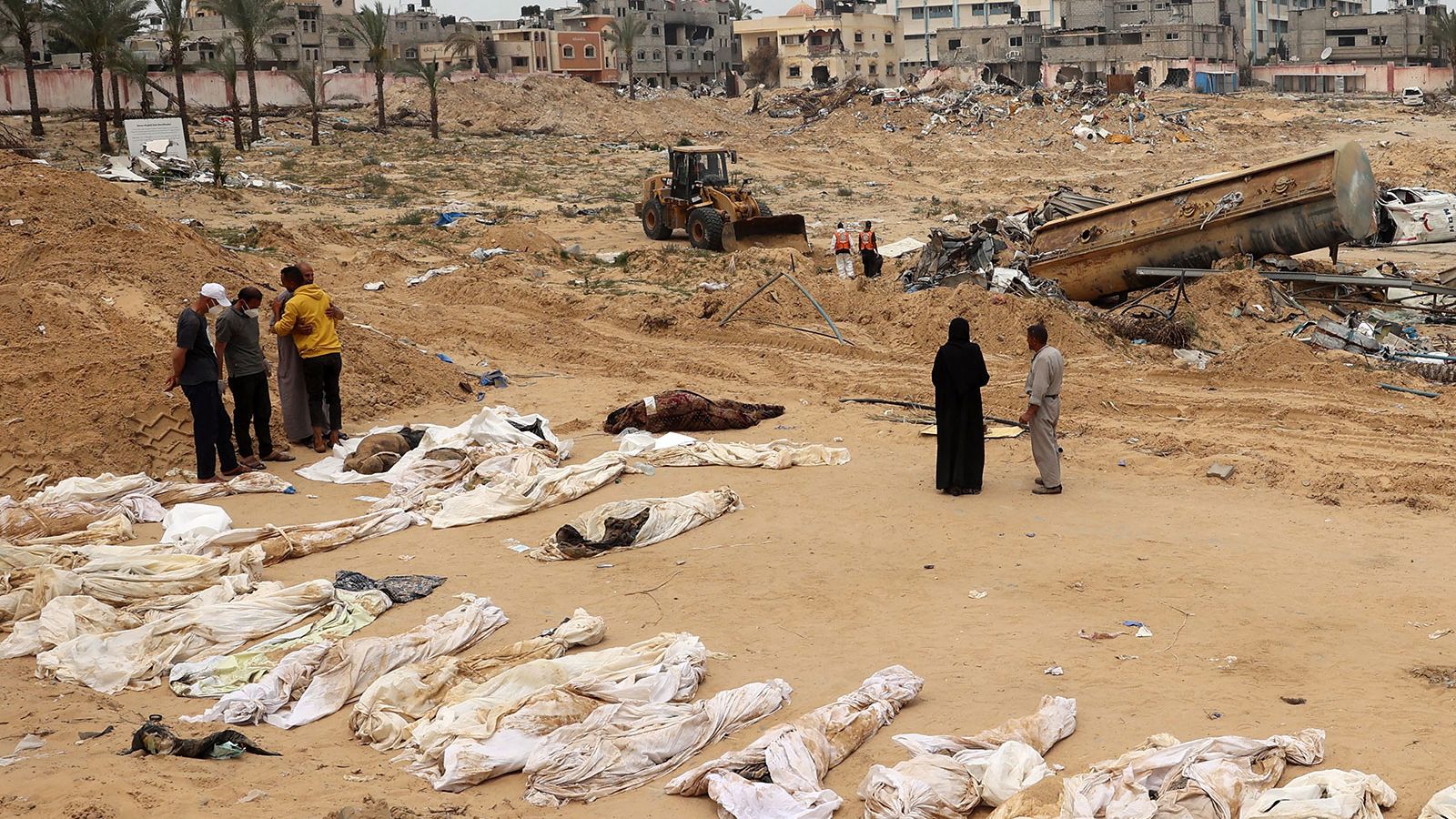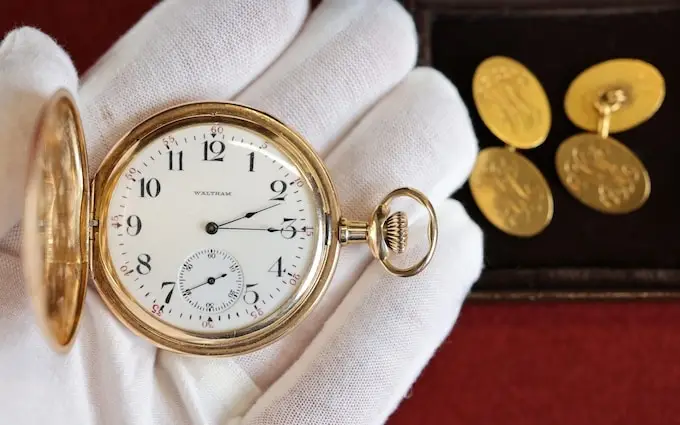Headline
5 Ways To Manage Diabetes During Ramadan Fast
Published
1 month agoon
By
Editor
Ramadan, the holy month observed by Muslims worldwide, is a time of spiritual reflection, fasting, and community. For individuals with diabetes, managing blood sugar levels during this period can be challenging but not impossible.
With careful planning and attention to health needs, it’s possible to successfully navigate Ramadan while effectively managing diabetes.
Here are five essential strategies to help individuals with diabetes maintain their health during Ramadan fasting:
Prioritize consultation
Prior to Ramadan, individuals with diabetes should schedule a consultation with their healthcare provider, particularly their endocrinologist or diabetes specialist. During this appointment, discuss the intention to fast and develop a personalized plan tailored to individual health needs.
Healthcare providers can provide valuable insights into managing medications, adjusting insulin doses, and monitoring blood sugar levels during fasting hours. They can also offer guidance on maintaining overall health and managing potential complications.
READ ALSO: 10 Health Tips For Ramadan Fasting
Opt for Nutritious Suhoor and Iftar
Suhoor, the pre-dawn meal, and Iftar, the meal to break the fast after sunset, play crucial roles in managing diabetes during Ramadan. Opt for balanced and nutritious meals that include complex carbohydrates, lean proteins, healthy fats, and plenty of fiber.
Complex carbohydrates such as whole grains, fruits, and vegetables provide sustained energy release, helping to prevent rapid fluctuations in blood sugar levels. Additionally, avoid excessive consumption of sugary or processed foods during Suhoor and Iftar, as they can lead to spikes in blood sugar levels.
Watch hydration and fluid intake
Staying hydrated is essential for individuals with diabetes, especially during the fasting hours of Ramadan. Dehydration can exacerbate blood sugar fluctuations and increase the risk of complications.
Encourage adequate fluid intake during non-fasting hours, focusing on water, herbal teas, and hydrating foods such as fruits and vegetables. Limit consumption of caffeinated and sugary beverages, as they can contribute to dehydration.
Aim to drink at least eight glasses of water between Iftar and Suhoor to maintain optimal hydration levels.
READ ALSO: Ramadan: 5 Hunger, Thirst-curbing Fruits You Can Take During ‘Sahoor’
Regular monitoring of blood sugar
Monitoring blood sugar levels regularly is crucial for individuals with diabetes, particularly during Ramadan fasting. Invest in a reliable blood glucose monitoring system and establish a routine for checking blood sugar levels throughout the day.
Keep track of blood sugar readings before Suhoor, after Iftar, and at regular intervals during fasting hours. Monitoring allows for timely adjustments to medication doses, dietary choices, and activity levels to maintain optimal blood sugar control.
If blood sugar levels fall outside the target range, follow the guidance provided by healthcare providers to address the issue promptly.
Moderate physical activity
Incorporating moderate physical activity into daily routines can help individuals with diabetes manage blood sugar levels effectively during Ramadan fasting. Engage in light exercises such as walking, stretching, or yoga during non-fasting hours to promote blood circulation and improve insulin sensitivity.
READ ALSO: Kano Hisbah Arrests 11 Muslims For Eating During Ramadan
Avoid strenuous activities during fasting hours, as they can lead to dehydration and exhaustion. Aim for at least 30 minutes of moderate exercise each day, scheduling sessions before Suhoor or after Iftar to maximize benefits while minimizing the risk of complications.
Repeat
Managing diabetes during Ramadan fasting requires careful planning, monitoring, and adherence to health guidelines.
By consulting with healthcare providers, consuming balanced meals, staying hydrated, monitoring blood sugar levels regularly, and incorporating moderate physical activity, individuals with diabetes can navigate Ramadan fasting safely and effectively.
Remember to prioritize health and well-being throughout the holy month, and seek support from healthcare professionals and community resources as needed. With proper management strategies in place, individuals with diabetes can observe Ramadan while maintaining optimal health and spiritual fulfillment.
You may like


JUST IN: ‘No New Moon Seen’, Sultan Declares Eid-el-Fitr Celebration Day


10 Health Tips For Ramadan Fasting


BREAKING: Sultan Declares Monday As First Day Of Ramadan In Nigeria


Ramadan Moon Sighted In Saudi Arabia


Ramadan: 5 Hunger, Thirst-curbing Fruits You Can Take During ‘Sahoor’


Ramadan: Buhari Sends Message To Muslims As Fasting Begins
Headline
Pop Star Justin Bieber Sparks Concern After Seen Crying Amid Rumours Of Rift With Wife
Published
3 hours agoon
April 28, 2024By
Editor
Pop sensation Justin Bieber has stirred concern among fans after posting a series of emotional selfies on Sunday, that has been linked to the rumoured split with his wife.
The 30-year-old singer took to Instagram over the weekend to share multiple photo dumps, offering glimpses into various aspects of his life.
From his surprise appearance at Coachella, where he performed during Tems’ set, to moments of leisure such as playing golf, enjoying the beach, smoking, and trying on different trainers, Justin Bieber’s posts provided a look into his world.
READ ALSO: Man Shoots Friend Dead For Taking Bite Of His Girlfriend’s Burger
It was, however, one particular set of images that garnered significant attention from fans.
In a close-up series of selfies, Bieber appeared visibly distressed, with tears streaming down his face.
The pop star stared solemnly into the camera, his emotions laid bare for all to see, as a single tear rolled down his cheek.
Despite the intimate portrayal of his emotions, Bieber offered no explanation or caption for his tearful display, leaving fans puzzled and concerned about his well-being.
READ ALSO: Man Jumps Into Lagoon, Dies After Being Chased By Mob For Alleged Stealing
Justin Bieber’s personal life has come under the spotlight since the recent rumors surrounding his marriage to wife Hailey Bieber (neé Baldwin), 27.
The couple, who tied the knot in 2018, has faced speculation about the state of their relationship on multiple occasions.
Concerns were raised recently when Hailey’s father, Stephen Baldwin, 57, requested “prayers” for the couple, fueling speculation about potential marital troubles.
Headline
400 Bodies Found In Mass Grave In Gaza Hospital
Published
1 day agoon
April 28, 2024By
Editor
The government in Gaza have concluded their search of mass graves at a hospital in the south of the strip and said they have uncovered a total of 392 bodies, including some still wearing surgical gowns.
Speaking at a Thursday news conference at Rafah, on April 25, an official from the Palestinian Civil Defense in Gaza said workers have identified 165 bodies at the Nasser Medical Complex in Khan Younis, following the withdrawal of Israeli forces from the area earlier this month.
According to Mohammed Al Mighayyer, they are still examining the remaining 227 bodies to determine their identities.
“We found three mass graves, the first in front of the morgue, the second behind the morgue, and the third north of the dialysis building,” he added.
READ ALSO: Israel Bombs Gaza, Fights Hamas Around Hospitals
The Israel Defense Forces (IDF) said any suggestion that it had buried Palestinian bodies in mass graves was false, and that a grave at the Nasser complex was dug by Palestinians in Gaza some months ago.
The Gaza Civil Defense acknowledged that around 100 bodies were buried in graves at the Nasser hospital before the IDF operation there.
CNN reports that people had buried the bodies of family members who had been killed on the grounds of the hospital as a temporary measure in January but when they returned after the Israeli military withdrew on April 7, they discovered the bodies had been dug up and then placed in at least one collective grave, not all in the initial spots they were buried in.
The Palestinian Civil Defense also showed graphic images on a TV screen at the news conference showing several almost unrecognizable bodies at the complex and bodies of decomposed children.
READ ALSO: Gunfire, Air Strikes As Israel Pushes South Against Gaza Militants
Al Mighayyer said the Civil Defense “witnessed the presence of children’s bodies in the mass graves at the Nasser Medical Complex, which proves crimes of genocide.” While the group says it is still examining the bodies, they suspect at least 20 civilians were buried alive in the complex, but it did not explain how it knows this, or offer proof.
Al Mighayyer also claimed there had been cases of executions of patients who had been receiving treatment at the hospital. He said several bodies were found with gunshot wounds to their heads and injuries to their bodies.
Al Mighayyer said at the news conference that the Palestinian Gaza Civil Defense in Gaza “discovered torture marks on [some] bodies.” CNN cannot independently verify these claims.
“Israeli forces buried several bodies in plastic bags at a depth of three meters, which made them decompose quickly.”
READ ALSO: JUST IN: Gas Explosion Rocks Abeokuta
“The occupation deliberately concealed evidence of its crimes in the Nasser Complex by changing the plastic shrouds more than once,” he claimed. Video recorded by CNN shows bodies wrapped in three different coloured shrouds: white, black and blue.
Amnesty International has also called for an investigation into the mass graves at the two Gaza hospitals.
I’m response, the Israeli Defense Forces, IDF said:“During the IDF’s operation in the area of Nasser Hospital, in accordance with the effort to locate hostages and missing persons, corpses buried by Palestinians in the area of Nasser Hospital were examined. The examination was conducted in a careful manner and exclusively in places where intelligence indicated the possible presence of hostages.”
The IDF continued: “At the end of February, IDF forces conducted a precise and targeted operation against the terrorist organization Hamas in the Nasser Hospital area. During the operation, about 200 terrorists who were in the hospital were apprehended, medicines intended for Israeli hostages were found undelivered and unused, and a great deal of ammunition was confiscated. The activity was done in a targeted manner and without harming the hospital, the patients and the medical staff.”
Headline
Watch Of Richest Titanic Passenger Sells For £1.17m
Published
1 day agoon
April 27, 2024By
Editor
A gold watch found on the body of the richest passenger on the Titanic was auctioned in England for £1.17 million ($1.46 million) on Saturday.
It was a record sum for an object linked to the notorious 1912 shipping disaster, said auctioneers Henry Aldridge & Son.
A US buyer won the bidding war, smashing the auctioneer’s pre-sale estimate of between £100,000 and £150,000.
The watch, engraved with the initials JJA, belonged to the US business magnate John Jacob Astor.
READ ALSO: Popular Iraqi TikToker Umm Fahad Gunned Down Outside Baghdad Home
Astor was 47 when he died as the Titanic sank in the early hours of April 15, 1912. He was reputed to be one of the richest men in the world at the time.
He died after having helped his wife, Madeleine, on board one of the lifeboats. She survived the disaster.
Astor’s body was found a week after the disaster, with the watch among his personal belongings.
“The watch itself was completely restored after being returned to Colonel Astor’s family and worn by his son,” said a statement from the auction house.

Delta Police Kill Suspected Kidnapper, Rescue Victims, Arrest Armed Robber Cultist

Gunmen Assassinate Governor Aiyedatiwa’s Campaign Coordinator In Ondo

Five Injured As Vehicles Collide In Lagos
Trending

 News4 days ago
News4 days agoDrama! Supporters Of Yahaya Bello Perform Rituals to Prevent His Arrest By EFCC [Video]

 Entertainment5 days ago
Entertainment5 days agoNollywood Actor, Zulu Adigwe Is Dead

 News4 days ago
News4 days agoVIDEO: Force PRO Orders Arrest Officers Caught On Video Bashing Driver’s Car

 News3 days ago
News3 days agoEdo: FRSC Threatens Sanction On Truck Drivers Loading Goods, Passengers Together

 Headline3 days ago
Headline3 days agoSaudi Arabia Opens First Alcohol Store, Nigerian Muslims React

 Metro4 days ago
Metro4 days agoEdo Cultists Kill Rival In Daughter’s Presence, Abandon Getaway Car

 Headline3 days ago
Headline3 days agoVIDEO: Meet Nigerian Pastor Who Predicted World Will End April 25

 News3 days ago
News3 days ago243 Passengers Cheat Death As Air Peace Plane Makes Emergency Landing At Lagos Airport

 Metro4 days ago
Metro4 days agoJUST IN: Four-year-old Boy Dies In Abuja School, Parents Suspect Foul Play

 News4 days ago
News4 days agoJUST IN: Wike’s Loyalist Rejects Fubara’s Redeployment, Resigns As Rivers Commissioner
































